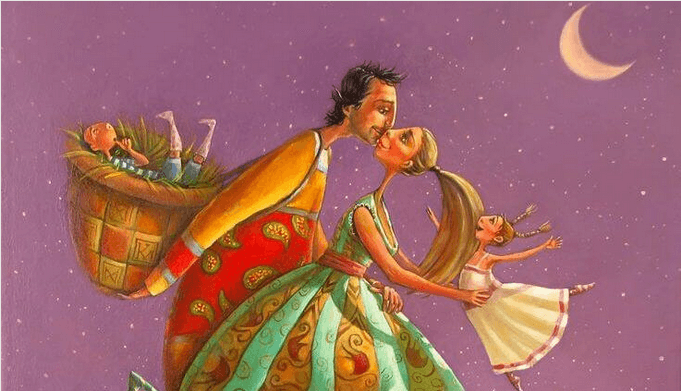The 6 Stages of Romantic Relationships

Romantic relationships grow, evolve and change, according to very distinct and defined stages. This explains why we do not feel the same a few years into a relationship as when we first met. Knowing these phases can help us feel at ease and secure in our relationship as it develops.
Just as people change, it is true that we also learn, grow and mature in relationships, and knowing this helps us fully enjoy the relationship with the person with whom we have chosen to share our life. The different stages of relationships are:
1. Infatuation
Falling in love is a time of intense emotions, “butterflies in our stomach” and a strong desire to stay by the person you’re in love with. Desire and passion, with or without sexual activity, become the main ingredients of this stage, which bring out an intense imagination and creativity which surprise the other person.

During infatuation, lovers focus on all the things they have in common. Patience and understanding characterize this phase, and lovers hardly perceive their differences.
Arguments and conflicts tend be avoided. Therefore, the beginning of relationships is a special and exciting period of discovering the other person, which we never want to end.
2. Knowledge
At this stage, infatuation leads to deeper and more intimate knowledge of the other person. And to the necessary discovery of differences and peculiarities of both…
Each person, singular and unique, begins to appear as they really are, in their entirety. Each person begins to share their personal experiences. There isn’t as much idealization, but the encounters are becoming more real.
“Remember that the greatest love and the greatest achievements involve higher risks.”
-Anónimo-
3. Coexistence
The couple is established as such, after a period of getting to know one another, where the focus has primarily been on the projection of a life together and on future projects. They have decided to share a life, by living together and by choosing a home.
Sexual activity decreases due to the routine, responsibilities and burdens. The couple’s love is expressed more affectionately, respectfully and in the form of support and understanding for a life in common. Differences may emerge in how to resolve conflicts and the search for agreements and negotiations will be necessary.

4. Assertiveness
After a period of living together and wanting to share everything, individual needs and the defense of such needs arise. It is time to consider doing activities separately, respecting the established link and commitment between partners. At this stage there may be conflicts due to unresolved personal crises.
It’s like a reunion with oneself after a period of being focused on the other person and the relationship. Upon the emergence of new individual needs, each of the partners decides to focus on themselves, at least for a little while.
5. Growth
If the couple reaches this point, it means they’ve decided to deepen their relationship, which becomes more mature and stable. It’s time to make decisions such as carrying out joint projects like having a family.
It is a stage where the illusion, the excitement and enthusiasm comes back by sharing what they have both decided to create. By continuing to build something and projecting their future life together.
“Love is two souls who see each other through the bodies.”
-Anonymous
6. Adaptation
Life goes on, and changes occur, if the couple adapts to them, it strengthens and matures. It is a time for the couple to grow stronger or break up, since the scale of personal values are challenged and shared. New interests arise due to changes such as the independence of children, retirement, illness, etc..
It can be a time of re-encounter, since the requirements, responsibilities and burdens of life are lower, and can focus again on the couple to share new projects, just like in the beginning of the relationship.
Romantic relationships grow, evolve and change, according to very distinct and defined stages. This explains why we do not feel the same a few years into a relationship as when we first met. Knowing these phases can help us feel at ease and secure in our relationship as it develops.
Just as people change, it is true that we also learn, grow and mature in relationships, and knowing this helps us fully enjoy the relationship with the person with whom we have chosen to share our life. The different stages of relationships are:
1. Infatuation
Falling in love is a time of intense emotions, “butterflies in our stomach” and a strong desire to stay by the person you’re in love with. Desire and passion, with or without sexual activity, become the main ingredients of this stage, which bring out an intense imagination and creativity which surprise the other person.

During infatuation, lovers focus on all the things they have in common. Patience and understanding characterize this phase, and lovers hardly perceive their differences.
Arguments and conflicts tend be avoided. Therefore, the beginning of relationships is a special and exciting period of discovering the other person, which we never want to end.
2. Knowledge
At this stage, infatuation leads to deeper and more intimate knowledge of the other person. And to the necessary discovery of differences and peculiarities of both…
Each person, singular and unique, begins to appear as they really are, in their entirety. Each person begins to share their personal experiences. There isn’t as much idealization, but the encounters are becoming more real.
“Remember that the greatest love and the greatest achievements involve higher risks.”
-Anónimo-
3. Coexistence
The couple is established as such, after a period of getting to know one another, where the focus has primarily been on the projection of a life together and on future projects. They have decided to share a life, by living together and by choosing a home.
Sexual activity decreases due to the routine, responsibilities and burdens. The couple’s love is expressed more affectionately, respectfully and in the form of support and understanding for a life in common. Differences may emerge in how to resolve conflicts and the search for agreements and negotiations will be necessary.

4. Assertiveness
After a period of living together and wanting to share everything, individual needs and the defense of such needs arise. It is time to consider doing activities separately, respecting the established link and commitment between partners. At this stage there may be conflicts due to unresolved personal crises.
It’s like a reunion with oneself after a period of being focused on the other person and the relationship. Upon the emergence of new individual needs, each of the partners decides to focus on themselves, at least for a little while.
5. Growth
If the couple reaches this point, it means they’ve decided to deepen their relationship, which becomes more mature and stable. It’s time to make decisions such as carrying out joint projects like having a family.
It is a stage where the illusion, the excitement and enthusiasm comes back by sharing what they have both decided to create. By continuing to build something and projecting their future life together.
“Love is two souls who see each other through the bodies.”
-Anonymous
6. Adaptation
Life goes on, and changes occur, if the couple adapts to them, it strengthens and matures. It is a time for the couple to grow stronger or break up, since the scale of personal values are challenged and shared. New interests arise due to changes such as the independence of children, retirement, illness, etc..
It can be a time of re-encounter, since the requirements, responsibilities and burdens of life are lower, and can focus again on the couple to share new projects, just like in the beginning of the relationship.
All cited sources were thoroughly reviewed by our team to ensure their quality, reliability, currency, and validity. The bibliography of this article was considered reliable and of academic or scientific accuracy.
- Abreu-Afonso, J., Ramos, M. M., Queiroz-Garcia, I., & Leal, I. (2022). How couple’s relationship lasts over time? A model for marital satisfaction. Psychological Reports, 125(3), 1601-1627. https://www.ncbi.nlm.nih.gov/pmc/articles/PMC9136471/
- Diamond, J. (2016). The Enlightened Marriage: The 5 Transformative Stages of Relationships and Why the Best Is Still to Come. Weister. https://books.google.com.co/books?id=cd9EDwAAQBAJ&printsec=frontcover&hl=es&source=gbs_ge_summary_r&cad=0#v=onepage&q&f=false
- Gonzalez Avilés, T., Finn, C., & Neyer, F. J. (2021). Patterns of romantic relationship experiences and psychosocial adjustment from adolescence to young adulthood. Journal of youth and adolescence, 50, 550-562. https://www.ncbi.nlm.nih.gov/pmc/articles/PMC7910227/
- Fromm, E. (2014). El arte de amar (8ª ed.). Grupo planeta.
- Lantagne, A., & Furman, W. (2017). Romantic relationship development: The interplay between age and relationship length. Developmental psychology, 53(9), 1738-1749. https://www.ncbi.nlm.nih.gov/pmc/articles/PMC5565725/
- Pinto, B. (2012). Psicología del amor. SOIPA Ltda. https://www.researchgate.net/publication/256791293_Psicologia_del_amor
- Rhoades, G. K., Stanley, S. M., & Markman, H. J. (2012). The impact of the transition to cohabitation on relationship functioning: cross-sectional and longitudinal findings. Journal of Family Psychology, 26(3), 348-358. https://www.ncbi.nlm.nih.gov/pmc/articles/PMC5956859/
- Seshadri, K. G. (2016). The neuroendocrinology of love. Indian journal of endocrinology and metabolism, 20(4), 558-563. https://www.ncbi.nlm.nih.gov/pmc/articles/PMC4911849/
- Stanley, S. M., Rhoades, G. K., & Whitton, S. W. (2010). Commitment: Functions, formation, and the securing of romantic attachment. Journal of family theory & review, 2(4), 243-257. https://www.ncbi.nlm.nih.gov/pmc/articles/PMC3039217/
This text is provided for informational purposes only and does not replace consultation with a professional. If in doubt, consult your specialist.







